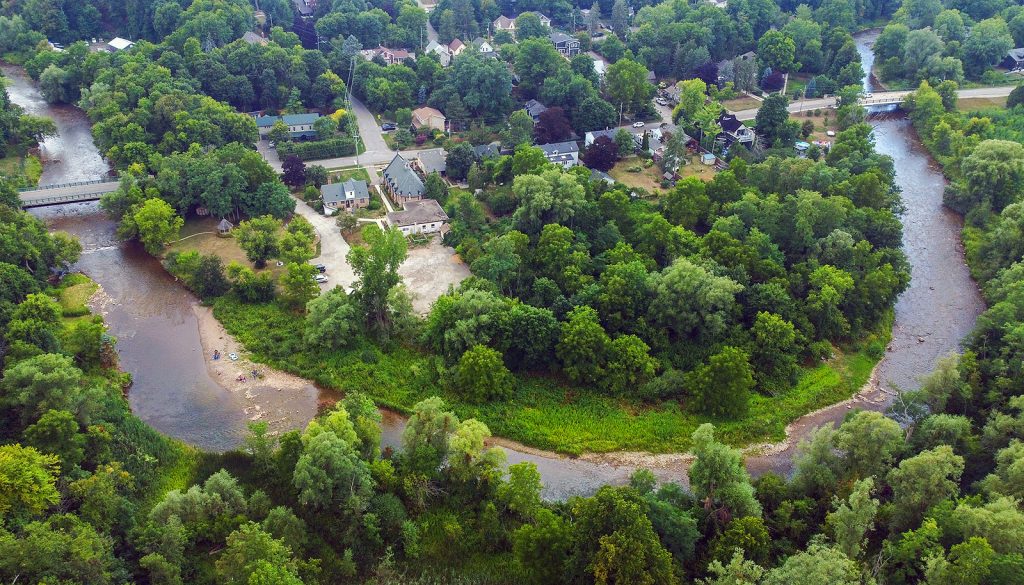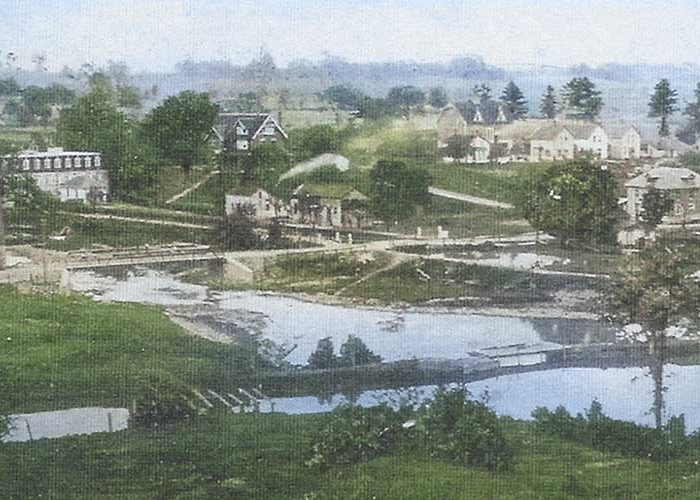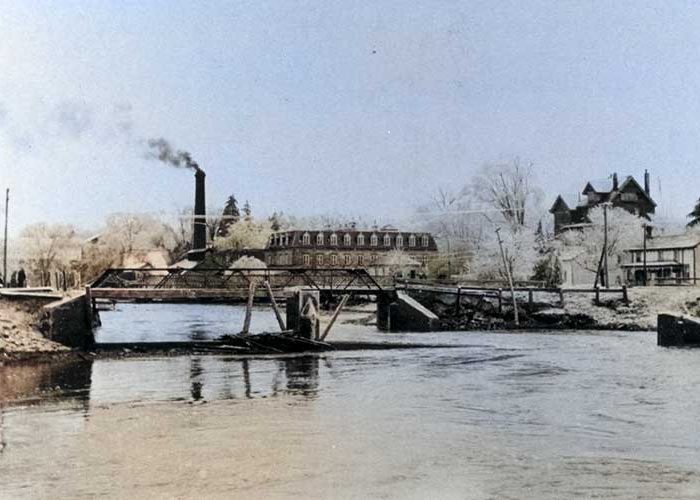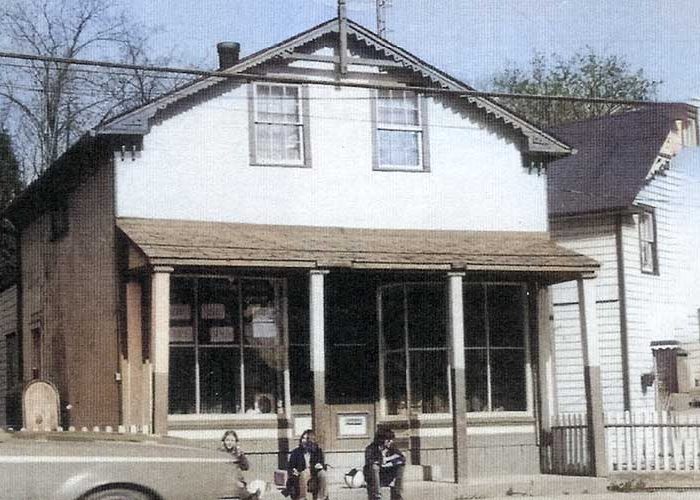The history of the Glen Williams was initially a forested 200-acre lot of land that was granted by the Crown to John Muirhead in late 1824. Within a year, Muirhead passed away, and the land was sold to Benajah Williams for 100 pounds. In 1825, old Benajah Williams and his wife, Elizabeth Kennedy, brought their large family to lot 21, concession 10, Esquesing Township.
As in most emerging settlements, the power of the local stream, in this case the Credit River, was used to run saw and flour mills, but the Williamses were more than just millers. They were blacksmiths (Joel Williams), cabinetmakers (Isaac Williams), leather tanners (David Williams), and general store (Charles Williams). Since Benajah had run a textile mill in the Niagara peninsula before moving to the Credit, it was natural for his son Jacob to open a woollen mill here in 1839.
“Beautiful spot! A perfect oasis in the leafy desert… The village is built on a ‘flat,’ but above and below it, there are numerous mill seats. It has only been a short time since it was located, yet there are already erected and in operation an extensive Woollen Factory by Williams, a Grist Mill with three runs of stones, and a Saw Mill.– There is no doubt that this place will be the nucleus of an extensive trade with the adjoining country in a few years.”
Such were the first impressions of a traveller who arrived in the Glen in 1847.

History of Glen Williams
The settlement which grew up around all this activity was known locally as Williamsburgh until 1852.
Postal authorities refused to give the community a post office unless its name was unique (and there was already a Williamsburgh on the St. Lawrence)–so it became Glen Williams. Although Charles Williams would be the first postmaster, it was to Wheeler’s General Store that generations of those in the Glen went for their mail.
William Alexander opened a hotel in the village in 1848 (now a private residence).
The first frame (as distinct from log) school in the township was built here in 1837, replaced by a large, one-room building in 1852.
By this time, besides Charles Williams’ saw and flour mills, the woollen mills and the tannery, there were cabinet makers, pump makers, shingle makers, Joseph Tweedle’s and Archibald Cooper’s saw mills, and Leslie’s brickyards.
The village even purchased its own fire engine in 1856 (only to see it destroyed in a fire ten years later!).
Williamsburgh from 1825
Glen Williams from 1852
The former Beaumont Knitting Mill still stands on the north edge of the village.
Built by Samuel Beaumont in 1882, it replaced the converted saw mill he had acquired from Joseph Tweedle several years before. The family carried on the Knitting Mill until 1957, when it was sold to Grew, Penrice and Graham. In 1982, the mill was sold and closed.
Unfortunately, the original woollen mills, the Glen Woollen Mills, are no longer in use, having burned down in 1954.
However, the home of the former mill manager, E.Y. Barraclough, still stands on the hill up above the site, and can be viewed on Mountain St. at the end of Tweedle St. In 1889, the Williams sold to Sykes and Ainley. It passed through several other hands and went bankrupt in 1936 before the end came in 1954.
The original Williams saw mill was one of the first buildings in Glen Williams to be designated a historic site.
After he lost his flour mill to fire in 1890, Joseph Williams converted his saw mill into a hosiery factory and electric power plant. In 1898, he sold out and moved. In 1901, a local company, the Georgetown Electric Power and Light, built a generating plant on the ruins of the burned-out flour mill. This closed in 1913 with the coming of Ontario Hydro. In 1926, the old saw mill and hydro plant became “Apple Products”, a seasonal fruit processing plant run by the Lindner family. Douglas Brock has been restoring it since its closure by Reinhart Vinegars in 1985.
The Presbyterians formed a congregation to the north-east of the village in 1835.
The magnificent stone Union Church has stood on the road to Terra Cotta since 1884.
Perhaps because the Williams family were Episcopal Methodists, the first regular services began in 1836. Four years later, they built their church, which was built in 1903.
Now the United Church, its active membership is associated with St. John’s United Church in Georgetown.
Against their Bishop’s wishes, the local Anglican congregation built their church, placing it just across the river from the Methodist Church in 1902. It presently has its own resident minister and a busy congregation.
The village school is now housed in a modern building, which has seen many additions since it was erected in 1950.
This school replaced the overcrowded two-room brick school on Prince Street, which was built in 1873 and has since been converted into a private residence.
Although the village has never been a self-governing municipality, in 1871, the citizens of Glen Williams built their own Town Hall (located next to the Copper Kettle Inn). A Board of Trustees have maintained the building and sponsored community events like the annual Canada Day celebrations and the children’s Christmas party.
Today, the “perfect oasis” takes considerable pride in its legacy of well-constructed buildings, its long manufacturing history and its sense of community (an irreplaceable commodity).
Though none of the original Williams family still lives here, the spirit of community, the relaxed village pace, and the convenience to many larger centres have led many others to call “The Glen” home!
WRITTEN BY: John Mark Benbow Rowe / Esquesing Historical Society
More photos from Glen Williams >>
Original photos: Genuweb






